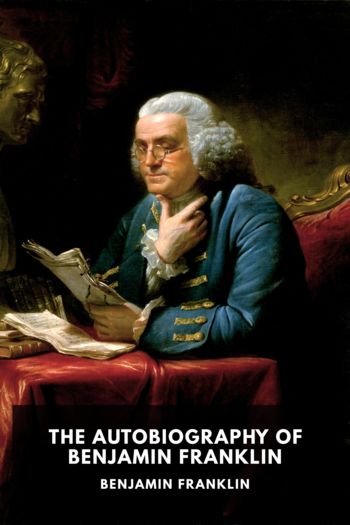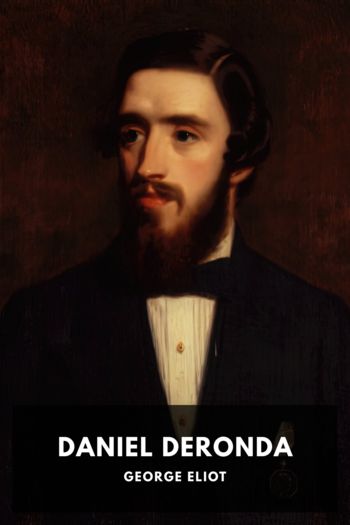How Soccer Explains the World: An Unlikely Theory of Globalization, Franklin Foer [reading eggs books txt] 📗

- Author: Franklin Foer
Book online «How Soccer Explains the World: An Unlikely Theory of Globalization, Franklin Foer [reading eggs books txt] 📗». Author Franklin Foer
For a time in the late ’70s and early ’80s, Pelé’s trajectory diverged from Brazil’s. With the Cosmos, he’d finally flourished financially. He told Time magazine in HOW SOCCER EXPLAINS THE SURVIVAL OF THE TOP HATS
2001 that America taught him that “[y]ou can’t do business with members of your family. You can’t appoint someone to be president of your company because he is a friend or your brother. You have to appoint the most capable person. Business is business. You have to be tough.” Put di¤erently, America made him a capitalist.
In fact, it made him quite a good one. Even after his retirement, as the images of his triumphs faded, his profitability continued on a pace of almost exponential growth. He became the perfectly postmodern image, a brand backed by multinational companies. Pelé’s figure now appears on two million MasterCards; Viagra, Nokia, Samsung, Coca-Cola, and Petrobras have tapped him as their international spokesman. Every year, he reportedly pockets more than $20 million from sponsorships alone.
It’s tempting to view Pelé, with his up-from-the-favela tale and his terminally a¤able demeanor, as the Brazilian Steppinfetchit, the ideally ino¤ensive corporate spokesman. But this sells Pelé and his ambitions short. He wanted to build his own Brazilian version of Warner Communications. In 1993, Pelé set out to buy the broadcast rights for Brazil’s national championship from the Brazilian Soccer Confederation (CBF). As the man most associated with the success of Brazilian soccer, he felt sure that he would be rewarded for his lifetime of contributions. And to ensure his position, he put cash behind his e¤ort —$1 million more than his near-est competitor. But from his many years as a member of the national team, he should have grasped that market forces don’t exactly govern CBF. One of the federation’s apparatchiks demanded that Pelé send $1 million to a Swiss bank account for the right to have his bid reviewed by CBF. Pelé refused and lost the contract.
Bitter and humiliated, Pelé set out for revenge. He exposed the bribe in an interview with Playboy. Pelé couldn’t have picked a juicier target. CBF’s president, Ricardo Teixeira, perfectly embodied the decrepitude of the cartolas. An obscure lawyer, without any prior involve-ment in soccer or sports administration, he’d arrived at the highly prized position in the Brazilian game for a perfectly predictable reason: His father-in-law was João Havelange, then the all-powerful head of the international soccer federation. Over his tenure, he acquired increasingly fancy cars, an apartment in Miami, and an entourage of bodyguards. While CBF ran up massive debts, Teixeira’s salary increased by more than 300 percent. Charges of corruption tailed him everywhere.
Prosecutors busted him cold for tax evasion, although they couldn’t beat out the statute of limitations.
For the few anti-corruption crusaders, it seemed their savior had finally arrived. Rich beyond imagination, they reasoned, Pelé could a¤ord to speak truth to power. He had, after all, been a corporate mascot with morals, refusing to advertise for cigarettes and alcohol.
“I only put my name to things I believe in,” he liked to tell reporters. High-mindedness had always been part of Pelé’s persona. When he scored his thousandth goal at Rio’s Maracanã stadium in 1969, reporters rushed to ask his thoughts. He bellowed, “Remember the children, never forget Brazil’s poor children.”
Pelé’s criticism of Teixeira fit the times. Latin America was in the midst of profound transformation—a broader revolt against corruption. After decades of protectionism and inflation, it was ready to ditch the crony HOW SOCCER EXPLAINS THE SURVIVAL OF THE TOP HATS
capitalist style of the military dictators. In its place, it chose (at least its elites chose) neo-liberalism of the Washington school. At the vanguard of the change resided the sociologist Fernando Henrique Cardoso. He made an unlikely capitalist and a charmingly tweedy politician. During the ’70s, he’d written the defining text of the Brazilian left, Dependency and Development in Latin America. His criticisms of the military government earned him interrogations, jail time, the firebombing of his oªce, and sporadic stints in exile.
But without the military dictatorship as a foil, after the regime’s collapse in 1985, Cardoso became ever less radical. By the time he became president in 1994, he’d emerged as the vital center of Brazilian politics.
Watching Pelé pick his battle with the crony capitalists at CBF, Cardoso saw a kindred ideological spirit and an opportunity for gamy politics. He named Pelé his Extraordinary Minister of Sports, Brazil’s first-ever black cabinet minister. “A symbol of Brazil that has come up from the roots . . . that has triumphed,” Cardoso crowed as he made the announcement. From the start, it was clear that Pelé had bought into the government’s “modernization” agenda. A year into his term, he proposed the “Pelé Law,” a set of IMF-like reforms for soccer, requiring clubs to operate as transparent capitalist ventures, with open books and accountable managers. It gave players the right to free agency, to abandon their clubs after their contracts ended. His aide Celso Grelet told me, “We thought at the time we’d bring business rationality and professionalism to the clubs.” Pelé hoped the reforms would attract foreign investors who would remake “Brazilian football into the NBA of the footballing world.” In a generation, Pelé had gone from exploited third-world labor to authoritarian icon to neo-liberal acolyte.
IV.
Flying into Rio, looking west from the mountaintop Jesus that reigns over the city, you can see the most famous Brazilian building, Maracanã stadium. From the street, staring at its squat steel rim, the Maracanã doesn’t look like it could hold over 200,000 people—
as it did for the finals of the 1950 World Cup, the largest ever live audience for a soccer game. It doesn’t even rise above its middle-class neighborhood. In the air, however, the magnitude





Comments (0)